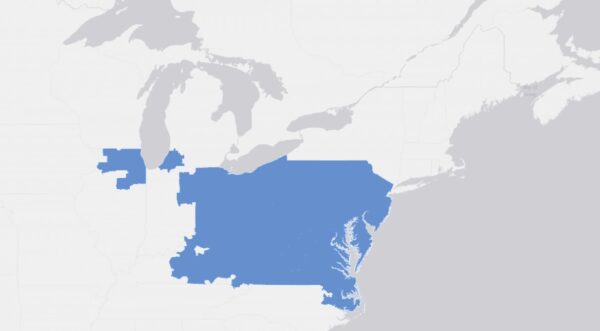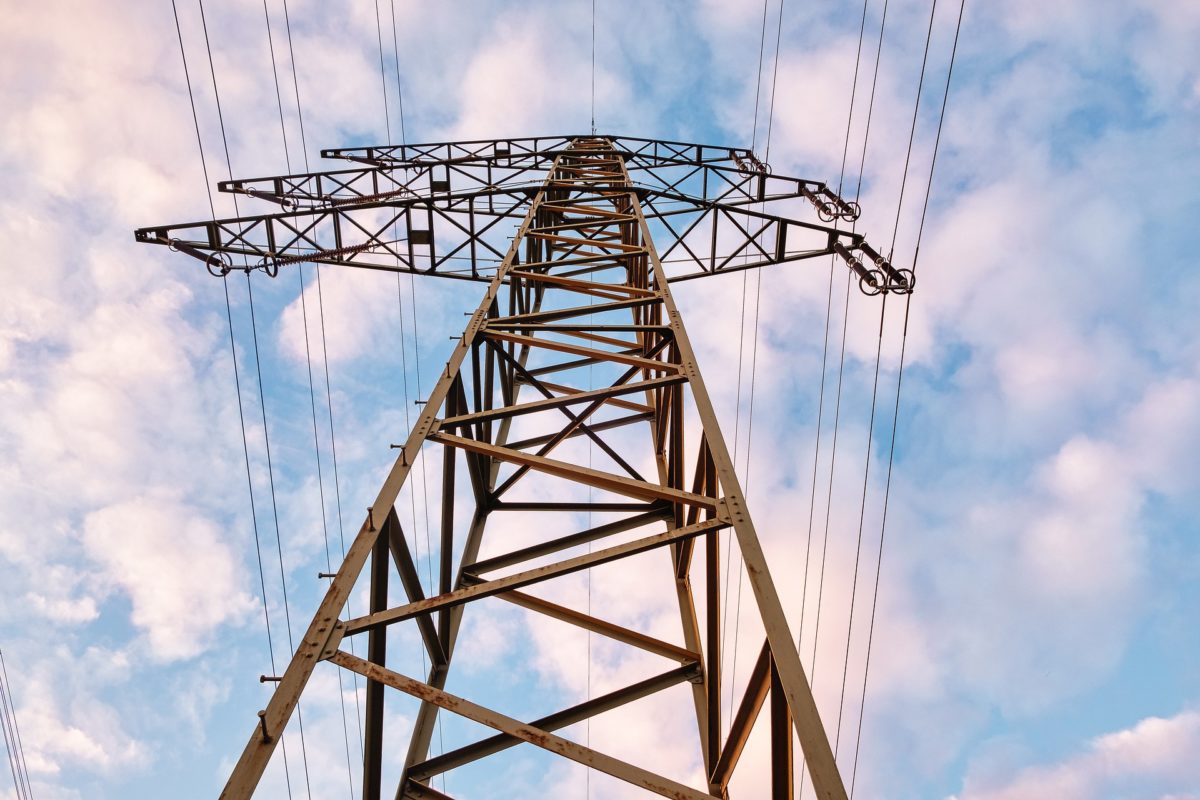The nation’s largest grid operator PJM can address its “looming capacity shortfall” by taking steps to enable certain battery storage projects to interconnect quickly, says a report from renewables trade group ACORE.
The Federal Energy Regulatory Commission (FERC) issued an order in 2018 requiring transmission operators such as PJM to offer a simpler, expedited study process that occurs outside the conventional interconnection queue, the report says.

Image: PJM
That process, known as Surplus Interconnection Service (SIS), allows new generators that do not trigger transmission system upgrades to use an existing generator’s unused interconnection capability.
Regional grid operators MISO and SPP have instituted “generally successful and FERC-approved” approaches to SIS, the report says. Yet PJM uses SIS study processes that “are inconsistent with FERC precedent,” that “discourage resources from participating in SIS,” and that make participation for storage resources “next to impossible.”
Expedited interconnection of utility-scale batteries could increase the accredited capacity available to PJM by almost 8 GW, the report says, adding that PJM currently has about 400 MW of battery capacity.
According to the report, a PJM analysis suggests that PJM faces a resource adequacy shortfall of about 4 GW by 2029 without new entry from high-capacity resources such as batteries.
The report recommends steps that PJM can take “immediately” to “ensure the timely development of storage” in the region.
Potential
“The resource adequacy deployment potential of SIS is meaningful,” the report says, explaining how SIS resources could increase the accredited capacity available to PJM by 7.8 GW.
Elise Caplan, ACORE’s vice president of regulatory affairs, calculated that if the resources added through an upgraded SIS process were entirely batteries, 13.7 GW of batteries would have an accredited value of 7.8 GW, based on data from the report.
Alternatively, other types of resources could access SIS interconnection. For example, Caplan pointed to a complaint that EDP Renewables North America filed with FERC arguing that PJM’s implementation of SIS “resulted in an unlawful denial” of SIS interconnection for an EDPR solar project at an existing EDPR wind facility.
At the RE+ Mid-Atlantic conference in July, panelists said that storage deployment in the PJM region lags that in other regions, and could be improved.
ACORE commissioned the report in partnership with clean power group ACP and solar trade group SEIA.
The report, prepared by Gabel Associates, is titled “ReSISting a Resource Shortfall: Fixing PJM’s Surplus Interconnection Service (SIS) to Enable Battery Storage.”
This content is protected by copyright and may not be reused. If you want to cooperate with us and would like to reuse some of our content, please contact: editors@pv-magazine.com.








By submitting this form you agree to pv magazine using your data for the purposes of publishing your comment.
Your personal data will only be disclosed or otherwise transmitted to third parties for the purposes of spam filtering or if this is necessary for technical maintenance of the website. Any other transfer to third parties will not take place unless this is justified on the basis of applicable data protection regulations or if pv magazine is legally obliged to do so.
You may revoke this consent at any time with effect for the future, in which case your personal data will be deleted immediately. Otherwise, your data will be deleted if pv magazine has processed your request or the purpose of data storage is fulfilled.
Further information on data privacy can be found in our Data Protection Policy.